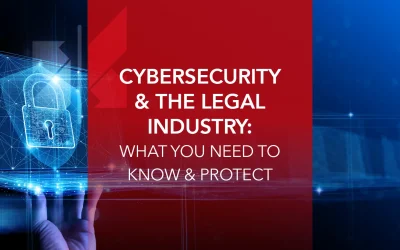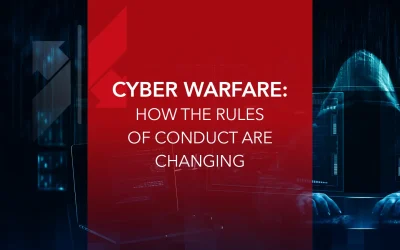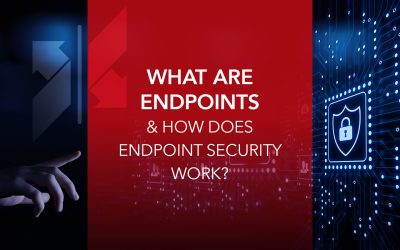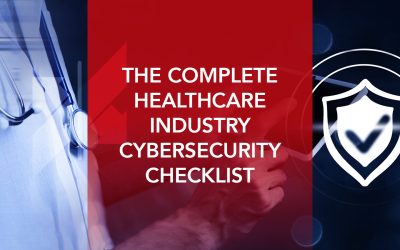Last updated September 27, 2022
Summary:
- The Equifax breach in 2017 and the CapitalOne breach in 2019 were disruptive, high-profile cyber attacks on major businesses. However, organizations of every size can be vulnerable to similar threats if they do not take steps to improve their cybersecurity posture.
- Not being up to date on current threats, inadequately safeguarding sensitive data, and insufficient cybersecurity training for employees can all make an organization more vulnerable to cyberattacks.
- Organizations that do not have an off-boarding process, lack a post-breach plan, or have permissions that are too accessible face additional vulnerability to hacks and threat actors.
- Strengthening your cybersecurity posture is complicated, but a managed security services provider (MSSP) can help your organization identify areas for improvement and implement custom solutions.
Though many of us may only hear about big cybersecurity incidents like the Equifax breach of 2017 and the CapitalOne hack of 2019, cybersecurity incidents are becoming increasingly common in the modern world.
Many C-suite executives and other decision-makers likely shook their heads as they read about these and other serious cybersecurity incidents, thankful that that sort of thing could never happen to their organization.
Unless you have a flexible and robust cybersecurity strategy in place, stay up-to-date on current threats, and have a post-breach playbook, the unfortunate reality is that your organization could experience a similar beach.
See also:
You Aren’t Up to Date on Cybersecurity Threats

You can’t adequately protect your organization and safeguard your digital assets if you don’t know what you are safeguarding your assets from. The cybercriminal landscape is continuously shifting and changing, and new threats are popping up every day.
Cybercriminals don’t work nine to five, Monday through Friday, so your cybersecurity team can’t either. Your team needs to be able to monitor threats 24/7/365.
You Aren’t Adequately Safeguarding Your Data
Not only do you need to stay up to date on all potential threats, but you and your team need to have the knowledge and skills necessary to protect your assets and thwart any would-be breaches before they occur.
If you do not have an adequate cybersecurity strategy in place to safeguard your data, you are vulnerable to a breach or other cybersecurity incident.
Your Employees Need More Training
Every employee, from the CEO all the way down the ladder, is responsible for cybersecurity. Employees need to understand why cybersecurity is important, what they can do to help safeguard your organization’s digital assets (from selecting strong passwords to reporting suspicious emails), and what they need to do if a breach or other incident occurs.
Not only do employees need to be trained, but their training should be ongoing and reviewed regularly. Tabletop scenarios and pen tests can help your team keep their skills up to date and avoid getting rusty. These scenarios also give your team a chance to test out your current cybersecurity protocols and analyze the efficacy of their response in a zero-risk environment so that they can be better prepared if an incident does occur.
Poorly trained or inadequately trained employees are a security risk, and may not even know they have compromised your cybersecurity or inadvertently caused a breach until the damage is already done.
You Don’t Have an Offboarding Process

While most organizations have a formal, or even informal, onboarding process (sorting out ID badges, assigning desks, signing paperwork), many organizations lack formalized protocols for offboarding employees who are leaving the organization.
When someone leaves your organization, you need to have a formal checklist in place for removing their access to critical systems as well. This includes removing access to internal systems as well as asking them to turn over their keys, ID badge, and any company equipment they were granted the use of during their time with the company.
You Don’t Have a Post-Breach Plan
Unfortunately, too many organizations don’t have adequate post-breach protocols in place. This means that when an incident does occur both employees and management are ill-prepared to deal with the aftermath.
Being unprepared can not only prevent you from properly addressing the breach and shoring up your defenses, but it could cause you to inadvertently run afoul to regulations such as GDPR because you are unable to craft the necessary comprehensive reports.
Reacting poorly to a breach can also harm your reputation and damage the trust you have worked hard to build with clients or customers.
Your Permissions Are Too Permissive
The hacker responsible for the CapitalOne hack may have used her insider knowledge of Amazon Web Service’s systems to exploit a bug and gain unauthorized access to CaptialOne’s private servers, but once she was inside it was CapitalOne’s excessive permissions that allowed her to gain access to the data of nearly 100 million Americans.
The way CapitalOne had configured their internal permissions meant that once the hacker was inside, she encountered almost no resistance and was able to easily view and read a wide selection of private files, and export them.
By implementing policies such as zero-trust architecture, you can contain a hacker and prevent them from moving freely about the system should they be able to gain access. Zero-trust architecture works like RFID keycards: you need to verify who you are each time you try to access private or sensitive areas of the system.
An MSSP Can Help
All of this may seem overwhelming. Cybersecurity is complicated, and there are a lot of things you need to consider to ensure that your organization’s digital assets remain secure.
A good Managed Security Services Provider (MSSP) can help you craft tailored cybersecurity strategies to meet your needs, monitor your systems 24/7/365 for potential threats, provide ongoing support, help you train your employees, and help you mitigate damage and ensure compliance if a cybersecurity incident does occur.







